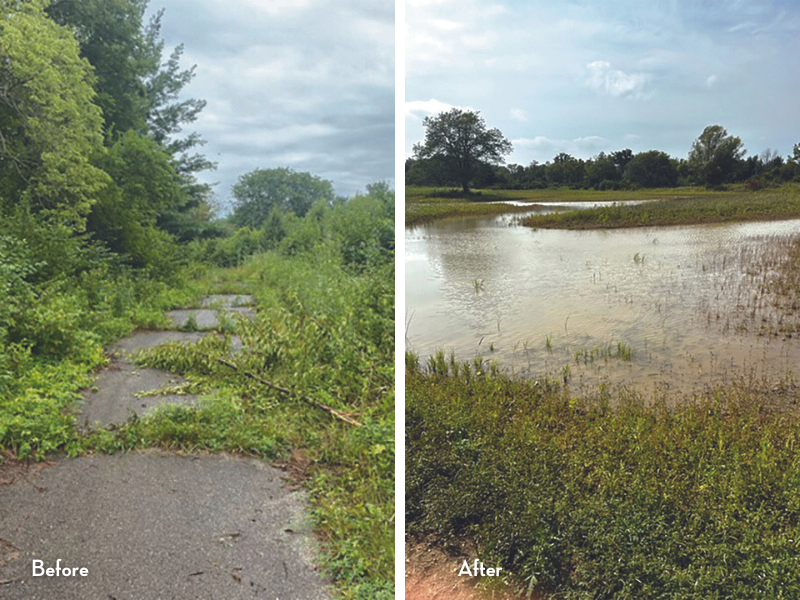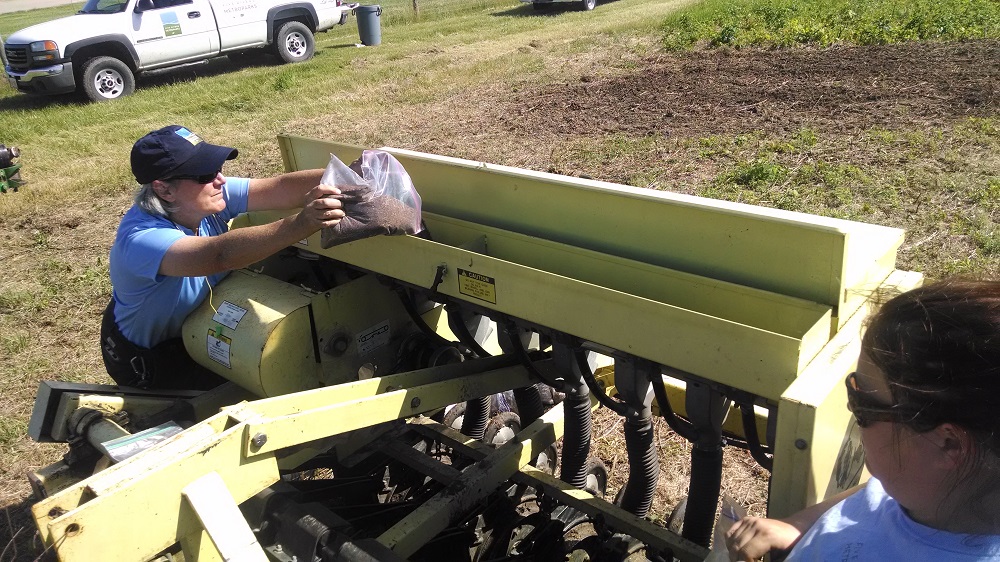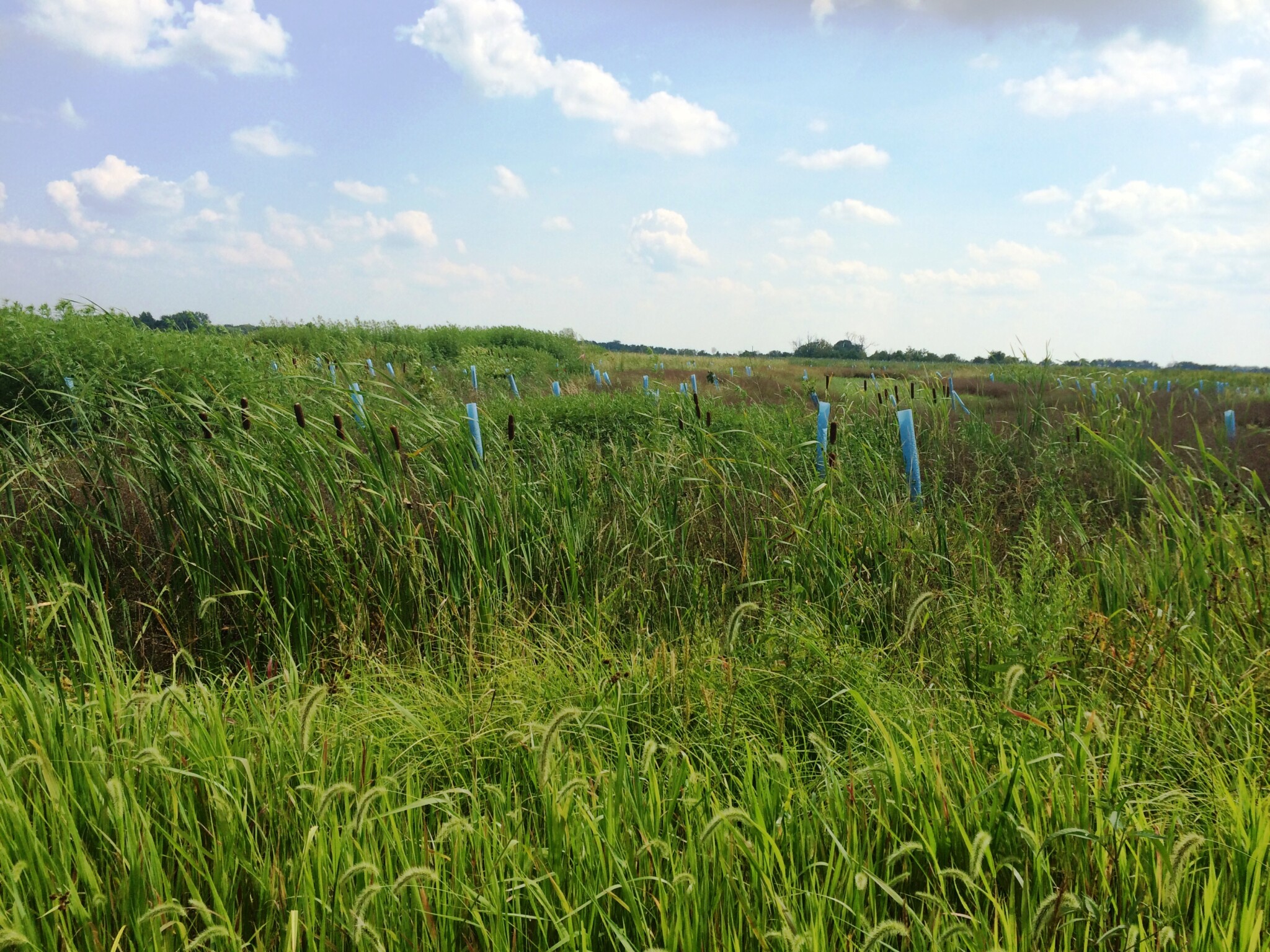Published May 8, 2024
Students Learn About MetroParks’ Conservation Work at Possum Creek MetroPark

A group of almost 40 students from the University of Dayton (UD) visited Possum Creek MetroPark to learn from Five Rivers MetroParks’ staff and about the upcoming habitat restoration project, funded by the Urban and Community Forestry Grant.
The UD students who visited were all river stewards, a group administered by UD’s Fitz Center for Leadership in Community focused on community engagement. Often, this learning goes hand-in-hand with longer-term research collaborations between faculty and community organizations – such as Five Rivers MetroParks – that mutually benefit from engaging in applied research.
River stewards are students with varying majors who share a passion for protecting the natural world. They also are primed to see the connections between Dayton’s rivers and streams, sustainable agriculture, urban greenspaces, and land use. Recently, these students have been working on their own conservation projects, including removal of invasive honeysuckle, with other local partner organizations. Invasive species removal also is a focus of Five Rivers MetroParks’ conservation team.
“Nearly everyone at UD is committed to research that responds to the challenges our wider community confronts,” said Zachary Piso, a UD professor and director of the Rivers Institute. “MetroParks has long been an incredible collaborator, working together to better understand our local and regional ecosystems and develop land management strategies based on the best available science.”

At Possum Creek MetroPark, the river stewards learned about habitat restoration, climate resiliency, and invasive and aggressive species from Grace Dietsch, MetroParks’ director of conservation, and Shane Sheldon, MetroParks’ regional conservation manager. The group hiked a portion of the MetroPark’s purple trail to see examples of different habitats and Argonne Lake.
There is a section of Possum Creek MetroPark in Argonne Forest almost devoid of invasive honeysuckle, thanks to a former MetroParks employee who consistently worked to eradicate it. Sheldon encouraged the river stewards to check out the area since it’s an example of what the woods should look like.
Students asked MetroParks staff how they choose what species to reintroduce to an area during the restoration process. Dietsch said the conservation team looks at existing native plants and plant communities.
“We try to mimic nature as much as we can,” said Dietsch. “Identifying those trees and plants that are around gives us the information about what plants are more likely to thrive.”
The 556-acre Possum Creek MetroPark is primarily former farmland. A 1930s historical amusement park dedicated to a World War I military unit was also located at this site. Since it became a MetroPark property in 1976, more than 100 acres of degraded farmland and dumps have been cleared and planted into native Ohio prairie. However, as a result of the previous land uses at Possum Creek, and despite ongoing restoration efforts by MetroParks staff, contractors and volunteers, invasive species remain substantial.
“It’s so helpful to see the different stages of restoration and understand how scarce resources can be put to good use in targeting landscapes with unique conservation value,” said Piso. “Plus, Possum Creek is a great example of restoring ecosystem services in ways that benefit disadvantaged communities, so the stewards were able to connect two of their core commitments – stewardship and environmental justice.”
Dietsch and Sheldon also told students how the Urban and Community Forestry Grant allows MetroParks to continue leading conservation work, such as invasive species removal and habitat restoration. MetroParks staff set the goal of removing 90% of the invasive species currently in Possum Creek MetroPark. The first step in this work is assessment. MetroParks staff is currently working to implement several forms of assessment including wildlife surveys and plant inventories.
The $1.45 million grant, funded by the U.S. Department of Agriculture’s Forest Service, is supporting Five Rivers MetroParks’ conservation work at Possum Creek MetroPark and Spring Run Conservation Area. This grant is part of a new federal grant program, the Urban and Community Forestry Program.
The Urban and Community Forestry Program aims to increase biodiversity and protect land from invasive species and climate change while enhancing the quality of urban life, wildlife habitat, recreation and more. The grant allows MetroParks to conduct intensive forest restoration work in disadvantaged areas, including the areas in which Possum Creek MetroPark and Spring Run Conservation Area are located.
MetroParks’ grant-funded work began this year and will continue through 2028. Success will be measured by monitoring select wildlife populations, such as bats, beginning in the second year.
“We can monitor trends over time and ask key questions: ‘Did we see increasing big brown bat populations?’ ‘Did we see little brown bats start to occur?’ ’Did we see tricolor bats after we removed invasive species and planted native, fruit-producing shrubs that attract little insects that are a food source,” said Dietsch. “Those are really good indicators of habitat health and a successful restoration project.”
Dietsch also explained that MetroParks staff are looking at water quality. Invasive species change soil composition, specifically its pH, which can turn almost as acidic as coffee. This does not allow other plants to thrive. When it rains, the rainwater percolates into the soil and carries it through the water shed, which goes into Possum Creek. MetroParks is working with partner organizations to set up a good water quality monitoring program. MetroParks staff also plan to set up salamander traps, since salamander populations are another great indicator of water quality. Dietsch said MetroParks staff expect to see water quality improve and the acidity go down as they remove more invasives.
To read more about this grant and how it is supporting MetroParks’ conservation work, visit metroparks.org/ParkWaysOnline.





